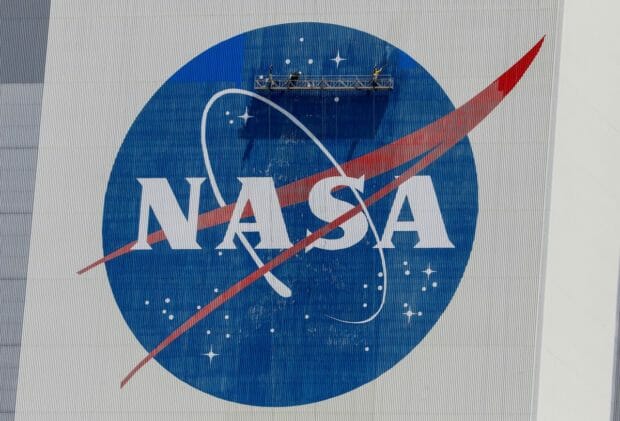NASA says US astronaut mission to moon will wait until 2025

FILE PHOTO: Workers pressure wash the logo of NASA on the Vehicle Assembly Building before SpaceX will send two NASA astronauts to the International Space Station aboard its Falcon 9 rocket, at the Kennedy Space Center in Cape Canaveral, Florida, U.S., May 19, 2020. REUTERS/Joe Skipper
NASA will not send astronauts to the moon until 2025 at the earliest, the U.S. space agency’s administrator said on Tuesday, pushing back by at least a year a timeline originally set under former President Donald Trump.
Trump’s administration had set the aggressive goal of returning astronauts to the moon in 2024, an initiative named Artemis intended as a stepping stone toward and even-more-ambitious human Mars landing.
“We are estimating no earlier than 2025 for Artemis 3, which would be the human lander on the first demonstration lander that was won in the competition by SpaceX,” NASA Administrator Bill Nelson told a teleconference.
Nelson cited seven months of litigation, which prevented communication between NASA and SpaceX, as a major reason why NASA is pushing back its target date.
A federal judge last Thursday rejected a lawsuit by Jeff Bezos’ space company Blue Origin against the U.S. government over NASA’s decision to award a $2.9 billion lunar lander contract to rival billionaire Elon Musk’s SpaceX.
NASA said following that ruling that it would resume work with SpaceX on the lunar lander contract as soon as possible.
Nelson, a former U.S. senator from Florida, was appointed by President Joe Biden to lead the space agency.
NASA had previously aimed to return crewed spacecraft to the lunar surface by 2028, after first putting a “Gateway” station into orbit around the moon by 2024. The accelerated goal pursued by Trump came as NASA struggled to resume human space missions from U.S. soil for the first time since the shuttle program ended in 2011.
The U.S. Apollo program sent six human missions to the moon from 1969 to 1972. The Artemis mission was named for the goddess of the hunt and of the moon in Greek mythology, the twin sister of Apollo.
NASA announced in September a decision to split its human spaceflight department into two separate entities – one centered on big, future-oriented missions to the moon and Mars, the other on the International Space Station and other operations closer to Earth.
The reorganization reflected an evolving relationship between private companies such as SpaceX that have increasingly commercialized rocket travel and the space agency that had exercised a U.S. monopoly over spaceflight for decades.